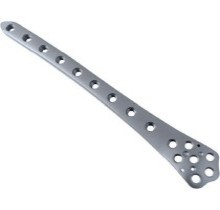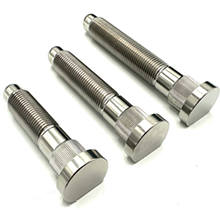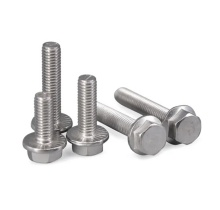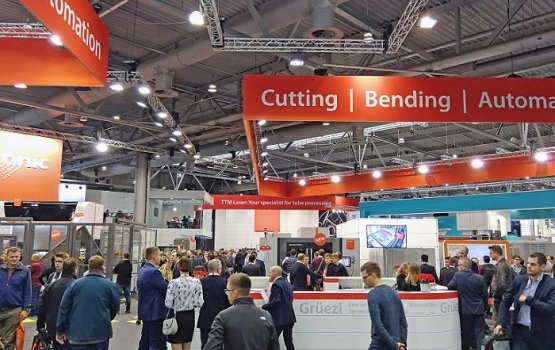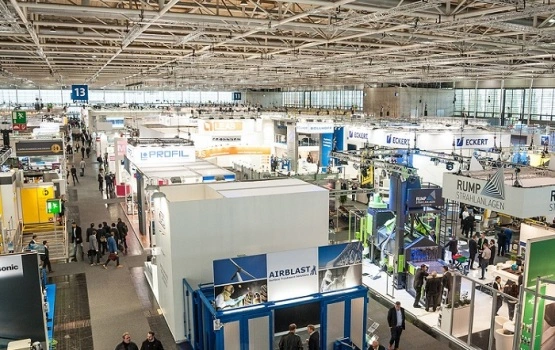Molybdenum (abbreviated as Mo) is a metal material with special properties, widely used in high-temperature, high-pressure, and corrosive environments. As a transition metal, molybdenum plays an important role in many industrial fields, especially in metallurgy, electronics, aerospace, and energy industries. Molybdenum plate, an important form of molybdenum material, has become an indispensable component in various high-tech applications due to its excellent physical and chemical properties. This article will explore the characteristics, main applications, and future development prospects of molybdenum plates.
Basic Characteristics of Molybdenum Plates
Molybdenum is a silvery-white metal with an extremely high melting point (2623°C), the third highest among all metals, second only to tungsten. Molybdenum has a relatively high density, about 10.28 g/cm³, but it has strong oxidation resistance, especially under high-temperature conditions. In addition, molybdenum plate has good thermal and electrical conductivity and is not easily corroded by many acids and alkalis. Therefore, molybdenum plate is an ideal material in many environments that require high temperatures, strong corrosion resistance, and high mechanical strength.
High-Temperature Stability
A notable feature of molybdenum plate is its excellent high-temperature stability. The extremely high melting point of molybdenum allows it to maintain strength and hardness in high-temperature environments, making it widely used in metallurgy and high-temperature equipment. Even at temperatures exceeding 2000°C, the strength of molybdenum plate remains stable, allowing it to perform excellently under extreme conditions.
Corrosion Resistance
Molybdenum has strong corrosion resistance, particularly against certain acidic environments (such as hydrofluoric acid, nitric acid, etc.) and marine environments. Therefore, molybdenum plate is often used in special industrial environments requiring corrosion resistance, such as chemical reactors and marine facilities.
Good Electrical and Thermal Conductivity
Molybdenum has good electrical and thermal conductivity, so it is also commonly used in applications requiring efficient transmission of current and heat, such as heating elements in the electronics industry and vacuum furnaces.
Main Application Fields of Molybdenum Plates
Due to its unique properties, molybdenum plate is widely used in various fields, especially in high-tech and high-temperature environments.
Metallurgy Industry
Molybdenum is widely used in the metallurgy industry, with molybdenum plate commonly used as an alloying element in steel production. The addition of molybdenum can significantly enhance the strength, wear resistance, and corrosion resistance of steel, especially in high-temperature environments. Additionally, molybdenum plate is widely used in furnace linings in the steel industry, where they can withstand high temperatures and reduce heat loss, improving energy efficiency.
Electronics and Semiconductor Industry
In the electronics and semiconductor industry, molybdenum plate is used as a support for electronic components, heating elements, and electrodes in vacuum technology. Due to its good electrical conductivity and high-temperature performance, it is widely used in high-temperature furnaces and heaters. For example, in crystal growth and photovoltaic silicon production processes, molybdenum plate is used as a heat treatment and heating element to ensure uniform heating of materials at high temperatures.
Aerospace and Military Applications
Due to its high melting point and good mechanical properties, molybdenum has become a key material in the aerospace field. Molybdenum plate is commonly used to manufacture high-temperature resistant components, nozzles, and reactors for spacecraft. Molybdenum plate can not only withstand extremely high temperatures but also maintain stability under high pressure and high load environments. Therefore, it is widely used in military missiles, spacecraft, rocket engines, and other high-performance equipment.
Chemical Industry
The corrosion resistance of molybdenum makes it valuable in the chemical industry. Molybdenum plate is often used to manufacture chemical reactors, distillation equipment, heat exchangers, and other equipment that needs to operate in highly corrosive environments. The high corrosion resistance of molybdenum plate ensures the long-term service life of these devices and reduces maintenance and replacement costs.
Energy Sector
Molybdenum plate is widely used in the energy sector, including nuclear energy and solar energy. Especially in nuclear reactors, molybdenum plate is used as reactor components, capable of withstanding high temperatures and strong radiation environments. Molybdenum plate is also used in the solar energy industry, particularly in the manufacture of high-temperature solar cells, where it serves as a supporting and conductive material to help improve energy conversion efficiency.
Future Development of Molybdenum Plates
With technological advancements and the ever-changing industrial demand, molybdenum plate has a broad development prospect. Here are some possible future trends:
Applications in the Green Energy Sector
With growing global attention to environmental protection and energy efficiency, the application of molybdenum in the green energy sector may become increasingly widespread. For example, the application of molybdenum plate in renewable energy fields such as fuel cells, battery storage systems, and photovoltaic power generation is expected to further expand. The stability of molybdenum in high-temperature and high-pressure environments gives it irreplaceable advantages in these fields.
Demand for High-Performance Materials
As the demand for high-performance materials in the aerospace, electronics, and military industries increases, molybdenum plate, as a high-temperature and corrosion-resistant material, will receive more attention in the future. Especially in new spacecraft, high-speed aircraft, and advanced weapon systems, the demand for molybdenum plate is expected to further rise.
Development of Molybdenum Alloys and Composites
With the continuous development of new materials, research on molybdenum alloys and molybdenum composites is also progressing. By combining molybdenum with other metals (such as niobium, tungsten, etc.), new alloys with higher performance can be created, further expanding the application potential of molybdenum in various industries.
Molybdenum plate, with its excellent high-temperature resistance, corrosion resistance, electrical conductivity, and thermal conductivity, plays an important role in many high-tech fields. From metallurgy, electronics, and aerospace to the chemical industry, molybdenum plate has become the foundation of many key equipment and high-performance materials. With the increasing demand for high-performance materials, the application prospects of molybdenum plate will be even broader, especially in green energy, advanced manufacturing, and high-end equipment manufacturing. As technology advances, the performance of molybdenum plate will continue to improve, and its future development potential is limitless.
 English
English  日本語
日本語  한국어
한국어  Deutsch
Deutsch  русский
русский  العربية
العربية 
